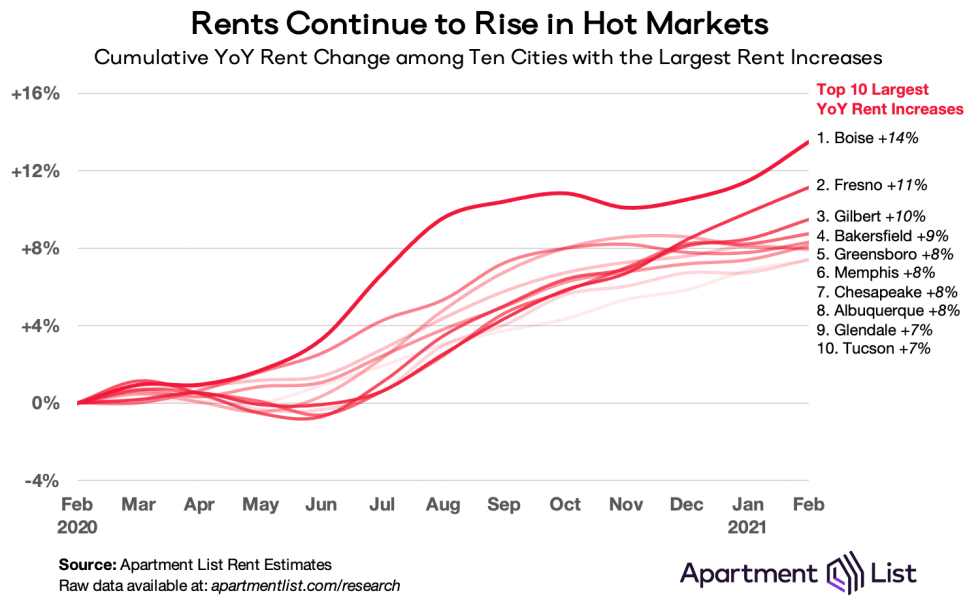Richard Florida’s article in the Wall Street Journal documents the early results of worker’s shift from offices to Zoom; falling rents and increasing vacancies in expensive large metros and the opposite trend in smaller less expensive metros, using data provided by Apartment List.
The Apartment List data shows a very broad decline in US rents compared to previous years, starting in with the COVID-19 pandemic in March of 2020. However, the national declines are primarily due to rent drops in expensive coastal cities. More affordable cities, however, have seen significant rent increases:

The charts from Apartment List and the WSJ article are dramatic, but most of the movement is constrained to a few metros at the extremes. The picture over the whole country shows little relative movement, as can be seen in this quantile plot, which compares the percentile position of each metro in 2020 versus 2021. With nearly every metro on the 45˚ line, there isn’t most movement in relative position from one year to the next.

The four outliers in the chart above — the points at the bottom, which had the largest change in relative rank, are all smaller, rural areas: Midland, TX; Williston, ND; Casper, WY; and Odessa, TX. Of those, Midland and Odessa are among the cities hardest hit but the COVID-19 recession, while Williston and Casper have long been subject to the boom/bust cycle of oil. Outside of those exceptions, the pandemic doesn’t seem to have caused a significant re-ordering of rents.
The trends that Florida documents are important and significant, but so far amount to a large effect in a small portion of US metros.

